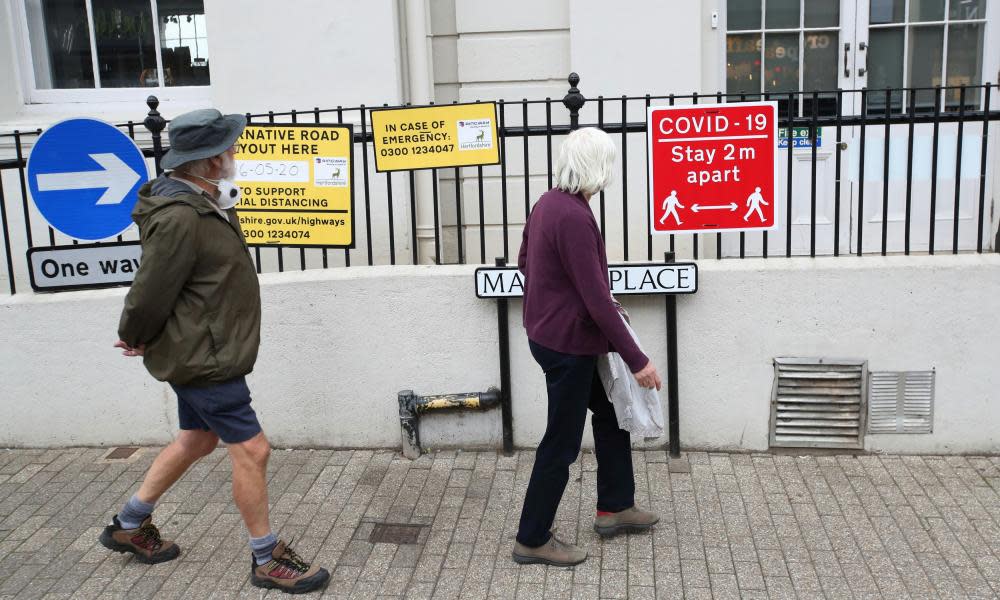Why socially distanced streets could damage older people’s mental health

“It just looks so awful.”
Agnes was referring to the streets of our small town. Like many, they were transformed a few weeks back to accommodate the 2-metre rule; this involved “widening” the pavements, which in turn narrowed the roads. This was achieved with the use of barriers, sandbags and cones, running the length of three of the shopping streets, adding over a metre to the pedestrian walkway, with perhaps two crossing gaps in every hundred yards. The barriers were made of plastic or metal grilles. To soften the impact the council has added flowered planters at some strategic points, which according to Agnes – a newcomer to our crumbly cohort – sadly emphasises the ugliness of the barrier system.
I volunteered with others to test the public reaction for the council. There were two of us on at any one time, a broad demographic mix from university students to older people like myself. Most of us did a couple of shifts, morning or afternoon during the fortnight consultation. The trouble was that there was hardly anyone to consult; lockdown may have ended and retail reopened, but people were still reluctant to risk the town. Footfall and wheeltread were well down.
Related: Calls to lift lockdown in UK care homes over fears for residents' mental health
Conversation however was easy and ranged across the Covid-19 spectrum with wildly contrasting views on masks, Sage, experts in general, and, of course, Boris Johnson. Yet while there was plenty of passion, all exchanges, with very few exceptions, remained good-humoured. The lycra-lad cyclists felt marginalised by the pavement widening and the motorists concerned at queues and, with it, the rise in pollution. The pedestrians were the only really happy bunnies, but all agreed that something had to be done.
Joyce, who had also done the question-asking agreed that it was not just a relief to engage with people again, but a comfort to realise we remained a relatively genial species. This hopeful sentiment was given a surprising endorsement when I joined a friend who picks up litter in the town park. A grassed area, about a couple of acres, criss-crossed with paths, it has been packed afternoon and evening – and night – with alfresco eaters and drinkers since the relaxation of lockdown. And practically no litter, he told me – all of it stashed into the seven or eight litter bins – even taken home - amounting to over a dozen full black bags when collected, but nothing other than a few bottle tops and fag ends on the grassed area.
He invited me to join him one Sunday morning and it was true. He reckoned it was because this was our “local”; the users were stakeholders.
Yet for all the positives, the Covid-friendly pavement business bothered me, not so much for its aesthetic insult to the landscape, which Agnes objected to, but for the social damage to its residents.
I believe that the theory behind social distancing, which manifests itself in the 2-metre rule, is a piece of pseudoscientific sophistry, plucked out of the air by socially illiterate panjandrums and mathematical modellers with no regard for its impact on mental health.
Crumbly life is one of intensifying “social distancing” and we know just how toxic it can be. Social intimacy is the genius of humanity. We are a connected creature, reflected in our cultural and congregational furniture and fittings.
But not in these new town pavements. These simply authorise a social anxiety disorder which views all around us as potential dangers – or as the the big beasts of Silicon Valley call us, “biohazards”. We are being programmed into anthropophobia, an aerosol away from generic misanthropy.
• Stewart Dakers is an 81-year-old community voluntary worker

 Yahoo News
Yahoo News 
